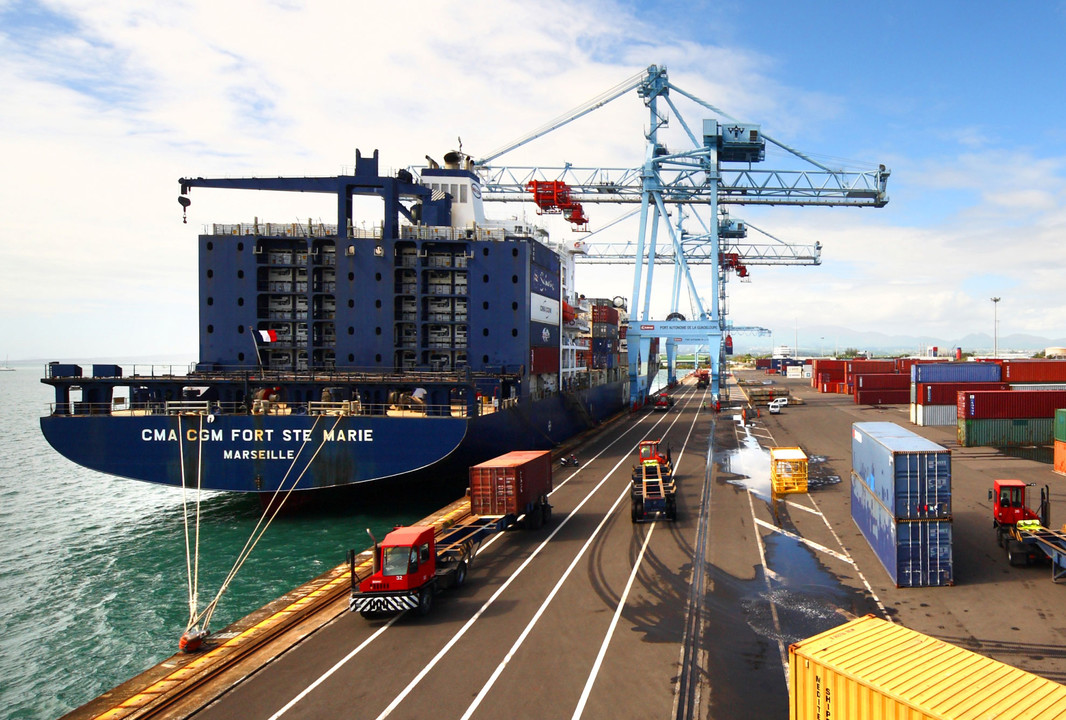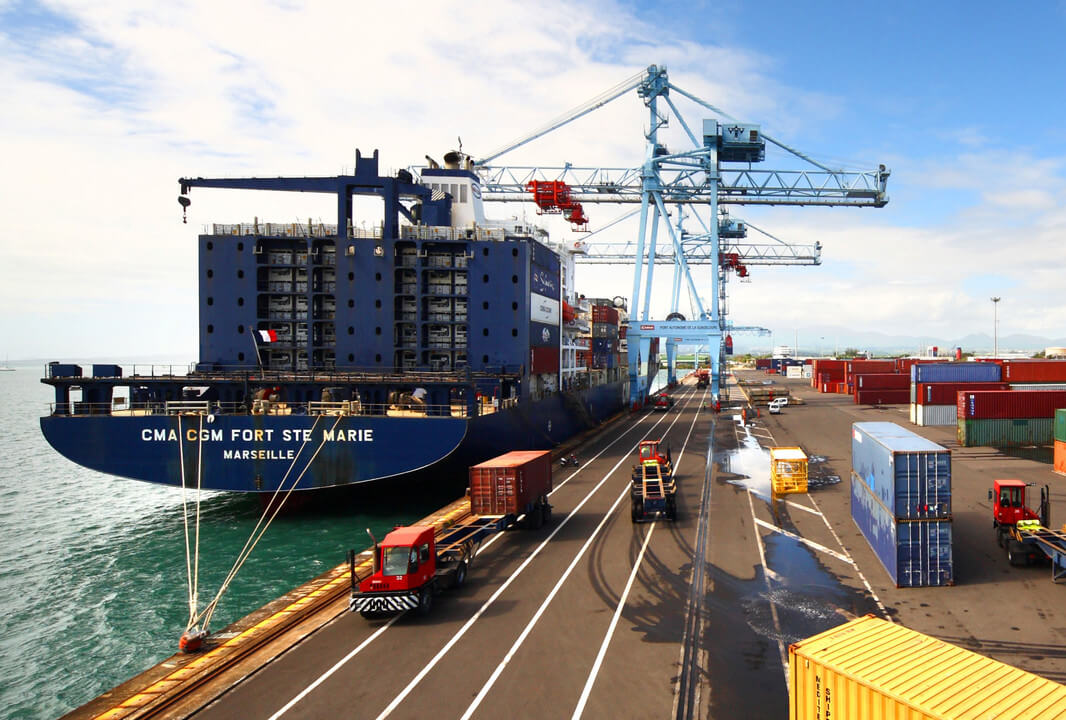A trade lane (or trade route) refers to a specific pathway along which goods are transported between two or more locations, typically across international borders. Trade lanes are established based on the flow of goods and the economic relationships between countries or regions. They encompass both maritime and air routes and play a crucial role in global supply chains by facilitating the movement of goods and fostering international trade.
Transit time refers to the duration it takes for goods or shipments to travel from their origin to their destination. It is a crucial metric in supply chain and logistics management, as it directly impacts delivery schedules, inventory levels, and customer satisfaction. Transit time encompasses the entire journey of a shipment, including transportation, handling, and processing at various checkpoints along the route.
Transloading refers to the process of transferring goods or cargo from one mode of transportation to another, typically from one type of truck or railcar to another, or from rail to truck and vice versa. This logistical practice is often employed to optimize transportation routes, reduce costs, and improve overall efficiency in supply chain operations.
A Transportation Management System (TMS) is a specialized software solution designed to streamline and optimize transportation and logistics operations within supply chains. It provides functionalities to effectively manage and control the movement of goods from origin to destination.
Transportation lead time refers to the duration it takes for goods to be transported from the point of origin to the final destination. It encompasses the time required for transportation activities, including loading, transit, and unloading, across various modes of transport such as road, rail, air, or sea.
A transshipment is the process of transferring goods from one transportation vehicle or vessel to another during their journey from origin to destination. It typically occurs at intermediary points along the supply chain route, where cargo is transferred between different modes of transportation, carriers or vessels.
Twenty-foot Equivalent Unit (TEU) is a standard unit of measurement used in the shipping industry to quantify the cargo-carrying capacity of container vessels. It represents the volume of a standard twenty-foot-long shipping container.
An Ultra Large Container Vessel (ULCV) is a massive container ship used on major trade routes, capable of carrying over 14,000 TEUs.
Vendor Managed Inventory (VMI) is a supply chain management strategy where the supplier or vendor takes responsibility for managing the inventory levels of their products at the customer's or retailer's location. In this arrangement, the vendor monitors the inventory levels based on agreed-upon criteria such as sales data or inventory levels, and initiates replenishment as needed.
Verified Gross Mass (VGM) is a term used in the shipping industry to refer to the total weight of a packed container, including its contents and packaging materials. It is a crucial requirement mandated by the International Maritime Organization (IMO) under the Safety of Life at Sea (SOLAS) convention to enhance safety in maritime transportation.
A floating structure with its own mode of propulsion designed for the transport of cargo and/or passengers. In the Industry Blueprint 1.0 "Vessel" is used synonymously with "Container vessel", hence a vessel with the primary function of transporting containers.
A vessel sharing agreement (VSA) is a cooperative arrangement between shipping companies that allows them to share space and resources on vessels for specific routes.
Vessel bunching refers to the situation where multiple vessels arrive at a port simultaneously or within a short period, leading to congestion and delays. This clustering of vessels can overwhelm port facilities, causing extended wait times for berthing, loading, and unloading operations.
A vessel call sign is a unique identifier assigned to a ship for radio communication purposes. It is used to distinguish the vessel from others in maritime communication systems, including VHF radios and satellite communications.
A vessel omission (sometimes called a port omission) occurs when a scheduled vessel does not call at a planned port during its voyage. This disruption means that the vessel skips the port entirely, which can impact the transportation and delivery schedules of goods.
In cargo shipping, vessel rotation is the planned sequence of port calls that a shipping vessel follows on its route to optimize cargo loading and unloading operations.
The timetable of departure and arrival times for each port call on the rotation of the vessel in question.
A journey by sea from one port or country to another one or, in case of a round trip, to the same port.
Warehouse utilization is a logistics metric that refers to the effective use of available warehouse space for storing goods and inventory.
Order for specific transportation work carried out by a third party provider on behalf of the issuing party.
Logistics yard management refers to the process of overseeing and controlling the movement of trucks, trailers, containers, and other vehicles within a yard or distribution center. This includes tasks such as scheduling, tracking, and coordinating the arrival, departure, and storage of these vehicles.
.png)
Global Port Performance: June 2025
June 2025 port performance data reveals three insights about global maritime operations that supply chain professionals should understand: efficiency improvements can mask volume decline, infrastructure investment delivers genuine competitive advantage, and seasonal congestion patterns signal systematic capacity constraints. Our analysis of 95 major ports provides actionable intelligence for navigating an increasingly complex maritime landscape.
The Efficiency Illusion - When Apparent Improvements Hide Volume Loss
This month's data reveals that several ports showing dramatic efficiency improvements actually experienced declining vessel activity, suggesting that apparent performance gains are being masked by a fall in volume.
Durban's performance trajectory perfectly illustrates this. The port appeared to recover dramatically fro January's crisis-level 2.691-day anchor times to just 0.422 days by March—an impressive 84% improvement that would typically signal successful operational reforms.
However, June's data reveals the reality behind these numbers:
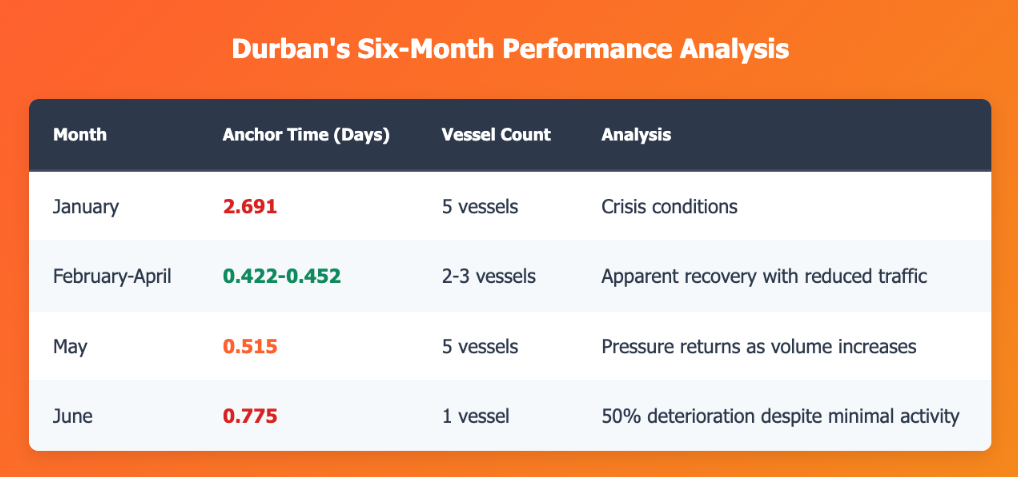
The World Bank ranks Durban 341 out of 348 ports globally, while recent reports indicate it will take until late-2025 for terminals to regain optimum functionality following equipment failures and operational challenges.
The Infrastructure Dividend - How Strategic Investment Can Create Sustainable Performance
Savannah's remarkable performance this month demonstrates how substantial infrastructure investment combined with operational excellence delivers genuine, sustainable competitive advantage.
Savannah's Genuine Achievement
Savannah achieved authentic performance improvements through strategic infrastructure development:
The Georgia Ports Authority is investing $4.5 billion over the next decade in projects targeting berth space, yard capacity, trucking gate fluidity, and intermodal connectivity, making Savannah the fastest-growing port on the U.S. East Coast with 12.5% volume growth.
The Infrastructure Advantage
Savannah's success stems from comprehensive infrastructure investment that addresses potential capacity constraints:
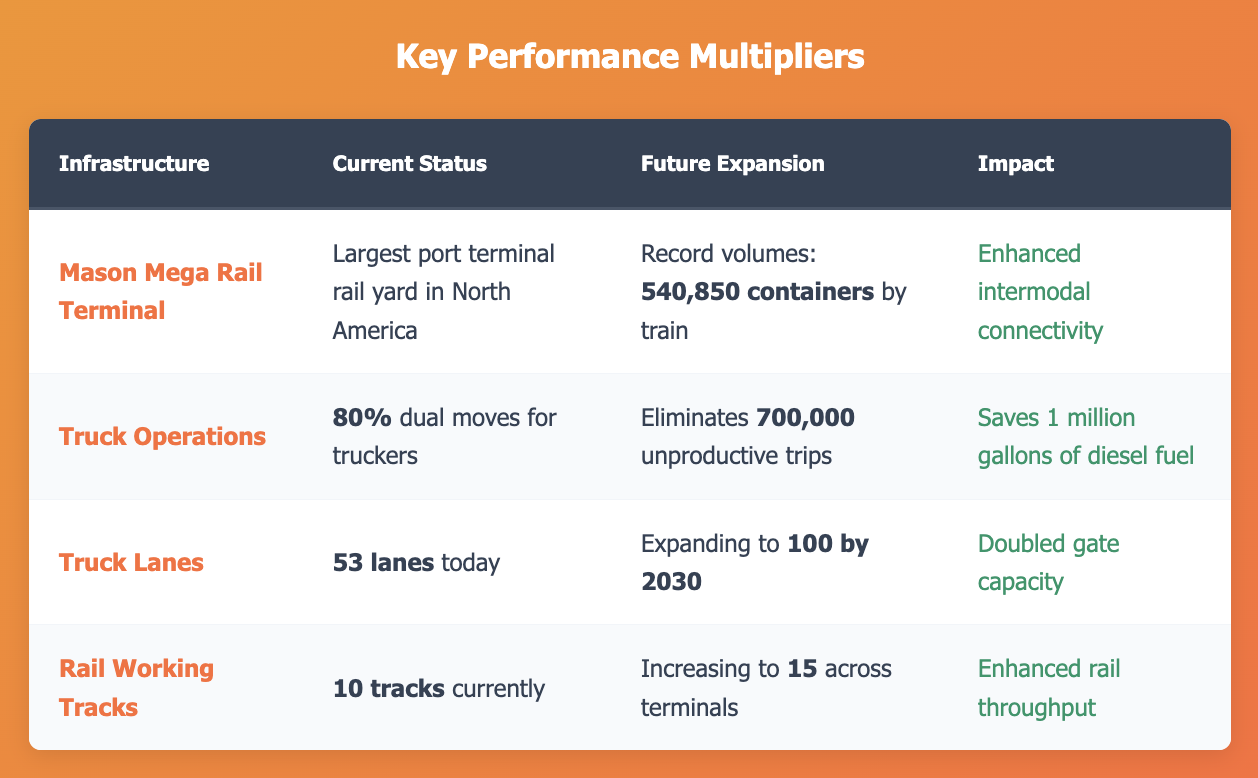
Savannah demonstrates how infrastructure investment can create the foundation for operational innovation. The port's ability to maintain efficiency during peak season stress while growing capacity positions it as a strategic asset for supply chain resilience.
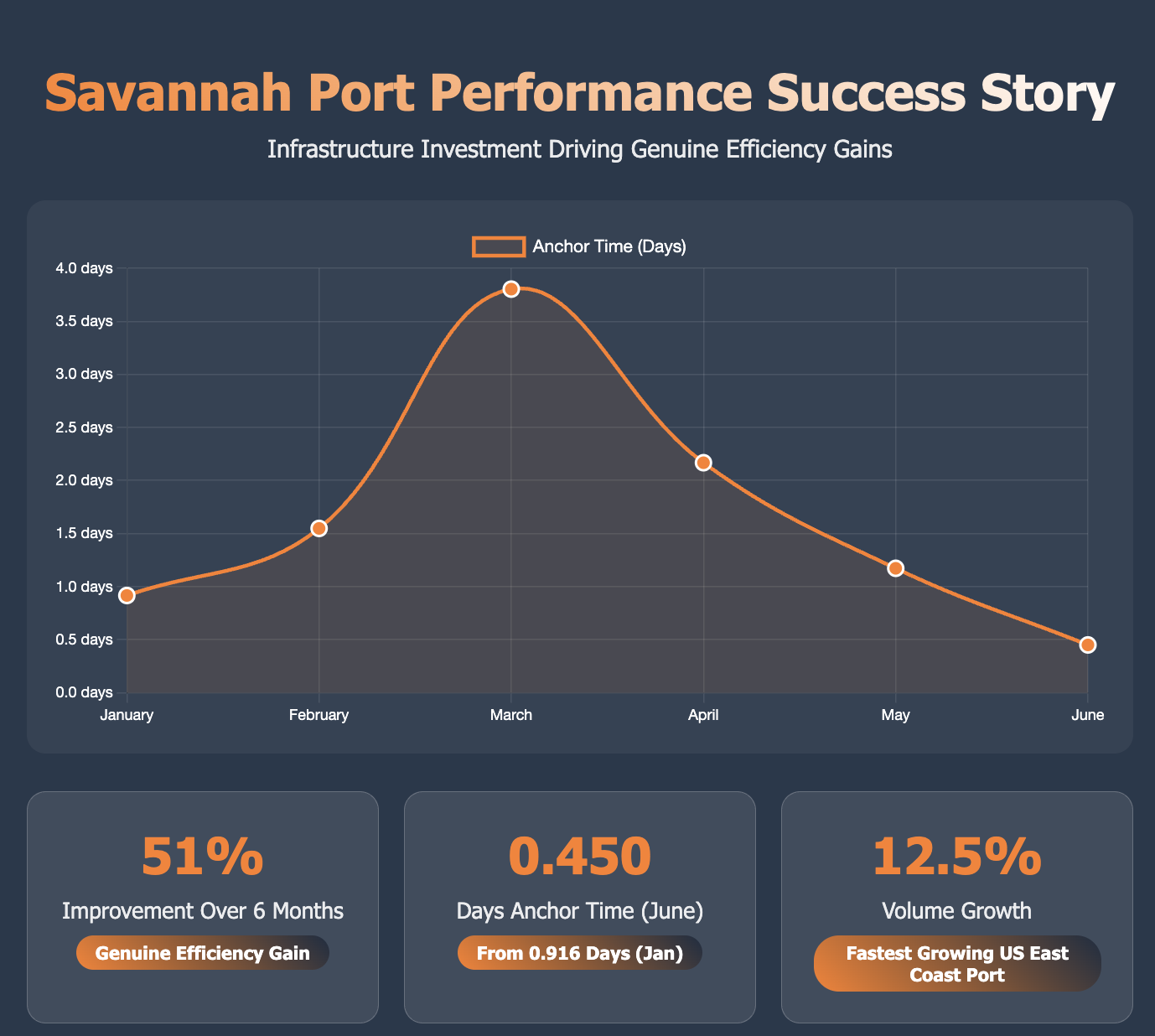
The Capacity Issue:
Chittagong's performance throughout the year, culminating in June's 3.111-day anchor times, demonstrates how seasonal congestion can affect eficiency.
The Breakdown
Chittagong's six-month trajectory reveals performance that worsens with seasonal demand:
Despite handling 90% of Bangladesh's seaborne trade, the port has experienced seasonal congestion between April and October since 2017, with ships waiting over a week during peak periods. The port's designed capacity was exceeded in 2014, yet expansion efforts remain insufficient.
The Strike Amplification Effect
February 2025's transport worker strikes provided a stress test of Chittagong's vulnerabilities, with 14 container ships waiting at outer anchorage for up to five days and terminals reaching 80% capacity. The disruption forced ships to depart without designated cargo while inland container depots stored double their usual outbound volume.
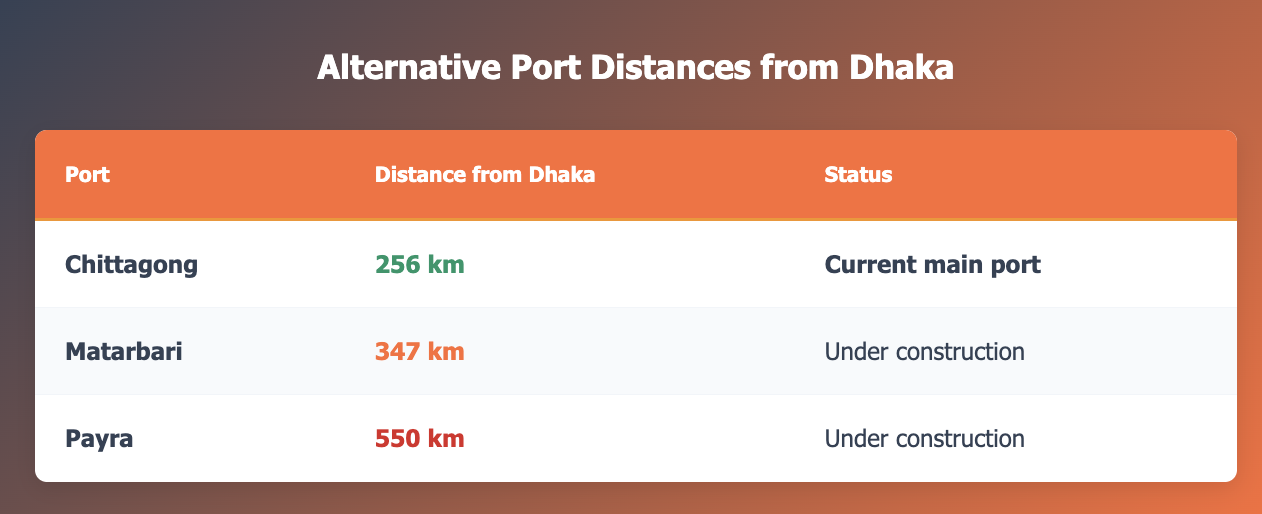
Limited port alternatives highlight how geographic constraints prevent easy load distribution, with new ports Matarbari and Payra located significantly further from Dhaka than Chittagong, raising concerns about effective freight shifting even after construction completion.
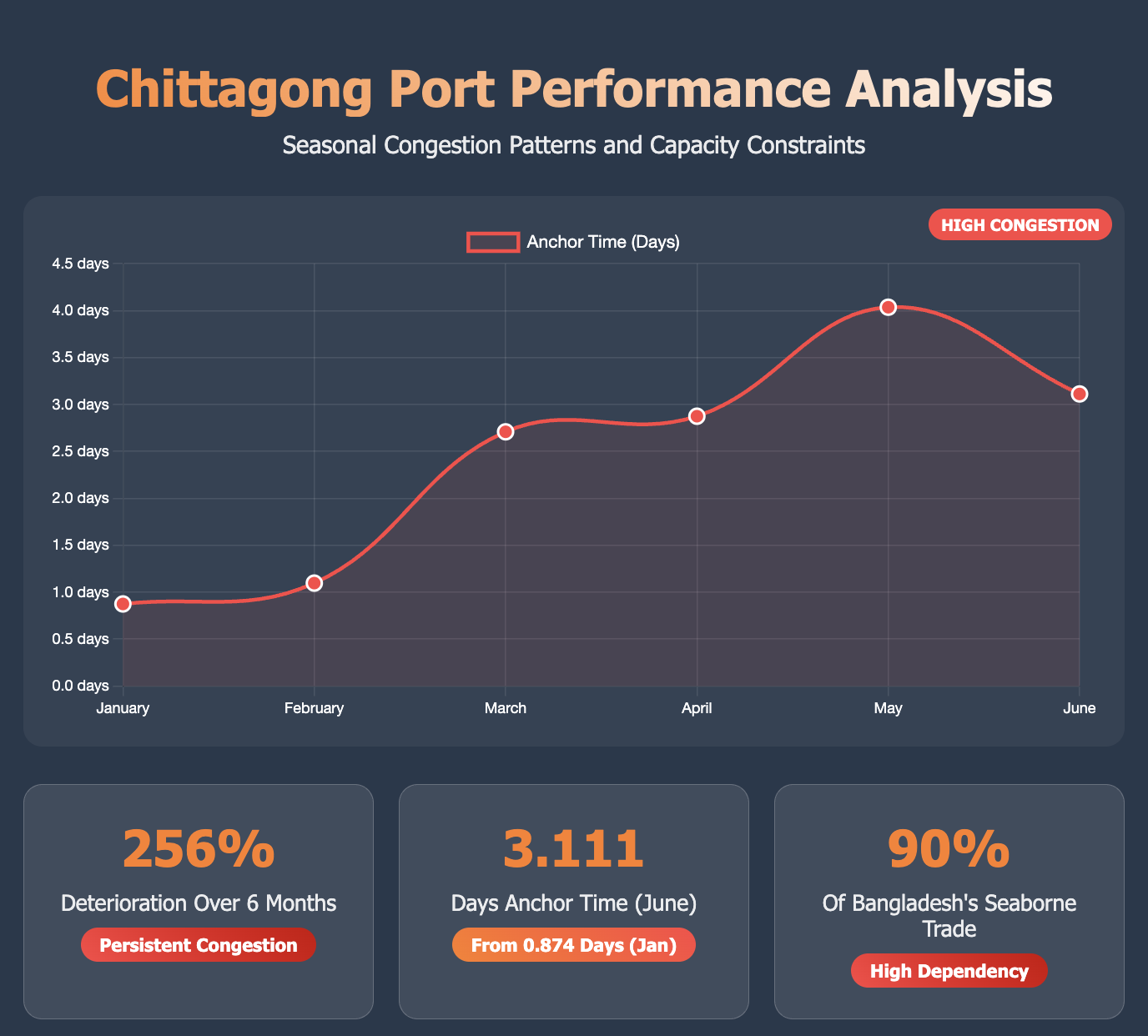
Monthly Performance Benchmarks: The Excellence Standards
World-Class Consistency Champions
Singapore: Maintained anchor times between 0.058-0.103 days throughout the six-month period, demonstrating operational excellence under varying conditions.
Shanghai: Exhibited remarkable stability with only 2.5% variance while managing massive vessel fluctuations (18-113 vessels monthly), showcasing world-class capacity management.
Rotterdam: Delivered consistent efficiency improvements with anchor times ranging 0.219-0.447 days while maintaining substantial throughput.
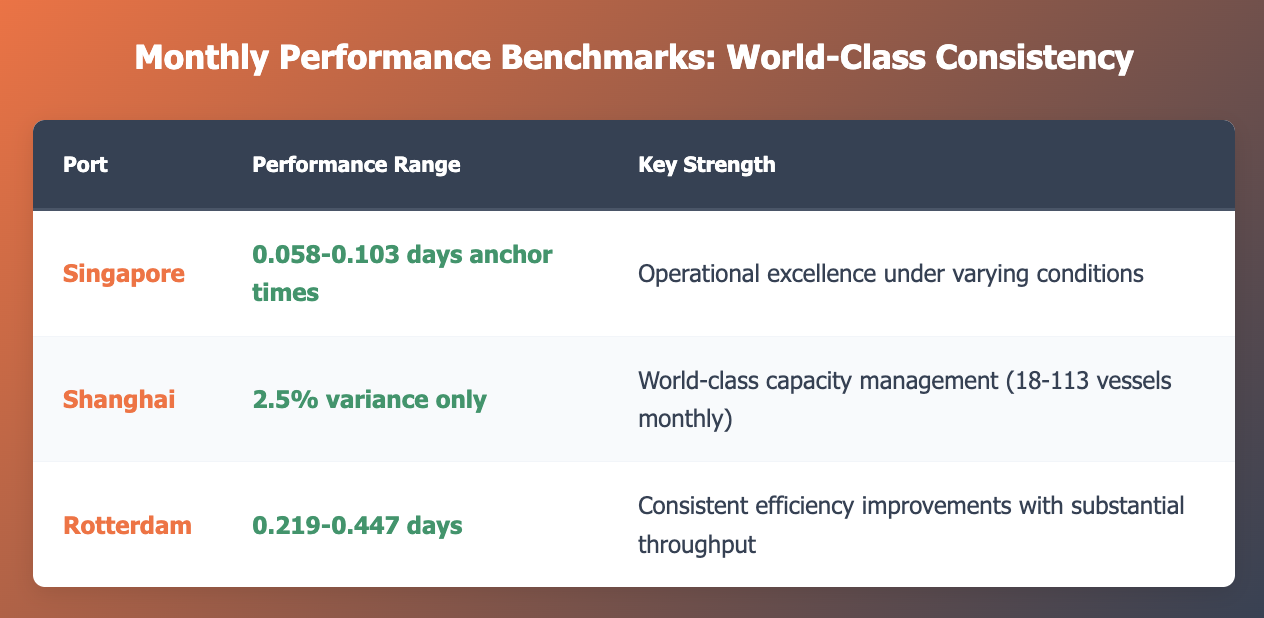
Strategic Intelligence for Supply Chain Professionals
Immediate Areas to Look Into
Avoid Volume-Loss Ports: Scrutinize ports showing dramatic efficiency improvements alongside declining vessel activity, as gains may prove temporary when demand returns.
Prioritize Infrastructure Leaders: Focus on ports with substantial ongoing capital investment where efficiency gains stem from capacity expansion rather than demand reduction.



